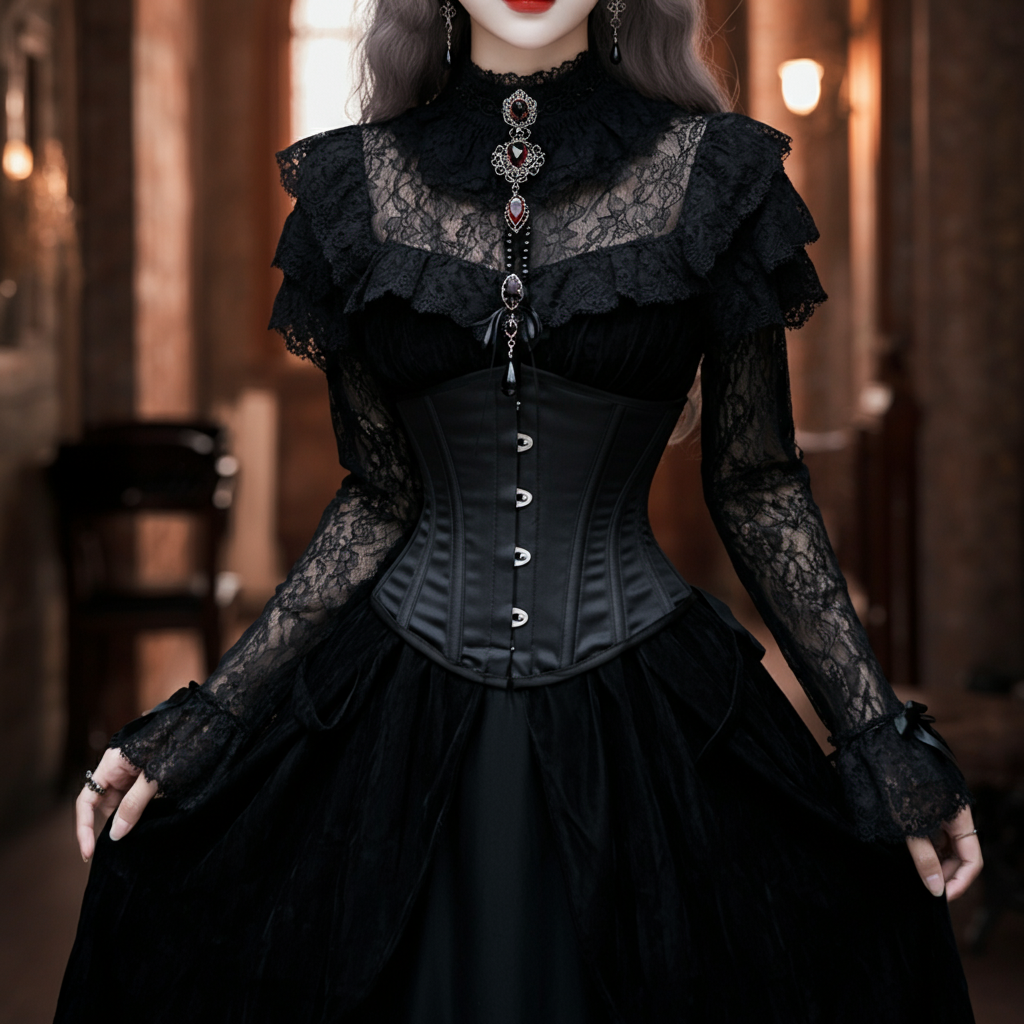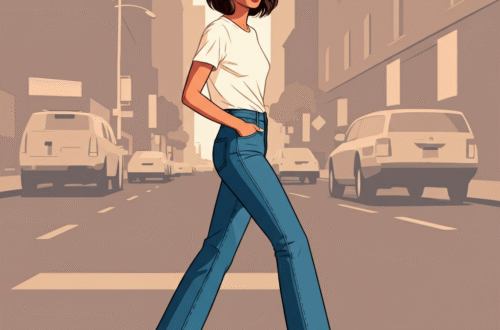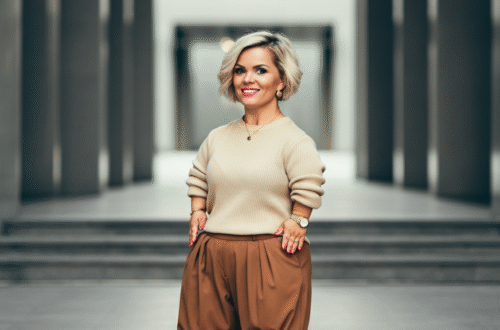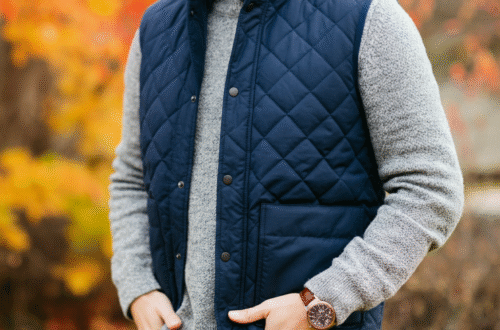Victorian Gothic fashion is more than just a style; it’s a dramatic statement, a nod to history, and a celebration of dark, romantic aesthetics. It blends the elegance of the 19th century with the mysterious allure of the gothic subculture. This unique fusion creates a look that is both timeless and strikingly modern, characterized by its intricate details, luxurious fabrics, and a palette that lives in the shadows.
From corsets and lace to velvet and brocade, this style embraces a kind of romantic melancholy. It draws inspiration from Victorian literature, art, and architecture, channeling figures from the novels of the Brontë sisters and the eerie tales of Edgar Allan Poe. Understanding this fashion means looking back at a specific time in history and seeing how its core elements have been reinterpreted by modern subcultures.
Key Takeaways
- Historical Roots: Victorian Gothic fashion is deeply rooted in the 19th century, borrowing silhouettes, fabrics, and mourning traditions from the Victorian era.
- Core Elements: Key components include corsets, lace, velvet, dark colors (especially black), long flowing skirts, and dramatic sleeves.
- Modern Influence: The style has been adopted and adapted by the modern goth subculture, which began in the late 1970s and early 1980s.
- Distinct Aesthetics: While often used interchangeably, Victorian Goth, Traditional Goth, and Steampunk are distinct styles with different inspirations and key elements.
- Accessorizing is Key: Accessories like chokers, cameo brooches, leather gloves, and platform boots are essential for completing the look.
The Historical Tapestry of Victorian Fashion
To understand Victorian Gothic fashion, we must first look at the era that inspired it: the Victorian period (1837-1901). This was a time of immense change, marked by industrialization, strict social codes, and a fascination with death and mourning. Fashion was a direct reflection of society, with clothing indicating class, marital status, and even one’s emotional state.
Women’s fashion during this era was defined by its restrictive yet ornate nature. The silhouette changed dramatically over the decades, moving from the wide bell shape of the crinoline in the 1850s to the prominent bustle of the 1870s and 80s. Fabrics were rich and heavy, with silk, satin, velvet, and intricate lace being popular choices for those who could afford them. The look was about layers, structure, and displaying wealth and propriety.
The Cult of Mourning
A significant influence on modern gothic style was the Victorian obsession with mourning. After the death of her beloved husband, Prince Albert, in 1861, Queen Victoria entered a period of deep mourning that lasted for the rest of her life. She exclusively wore black, setting a trend that permeated society.
Victorian mourning etiquette was incredibly strict, with specific rules about what to wear and for how long. Full mourning required head-to-toe black, often in non-reflective fabrics like crepe. This solemn, dramatic aesthetic, with its veils and jet jewelry, became a cornerstone of what we now recognize as Victorian Gothic fashion. Many styles seen today on fashion blogs like those found at truefashionstory.comBlog pull directly from these historical mourning conventions.
Core Elements of Victorian Gothic Fashion
The modern interpretation of Victorian Gothic fashion takes the most dramatic elements of 19th-century style and amplifies them. It’s a curated selection of historical fashion, chosen for its beauty, mystery, and dark romance.
Corsets and Structured Bodices
The corset is arguably the most iconic piece of Victorian-inspired wear. Historically used to create the fashionable “hourglass” figure, it has been reclaimed by the goth subculture as a symbol of power and aesthetic beauty. In modern Victorian Gothic fashion, corsets can be worn as outer garments over blouses or dresses, adding structure and drama. They are often made from materials like brocade, leather, or velvet and may feature steel boning or decorative lacing.
Luxurious and Dark Fabrics
Fabric choice is crucial for achieving an authentic look. The style favors materials that are rich in texture and color, creating a sense of opulence and mystery.
- Velvet: Deep, plush velvet in black, burgundy, or dark purple is a staple. It absorbs light, adding to the moody and luxurious feel.
- Lace: Intricate black or white lace is used for everything from full dresses to delicate trim on cuffs and collars. It adds a touch of fragile, romantic beauty.
- Brocade and Damask: These woven fabrics, often featuring elaborate floral or baroque patterns, add texture and a sense of historical richness to jackets, corsets, and skirts.
- Silk and Satin: While less common for everyday wear, silk and satin provide a lustrous sheen perfect for formal gowns or blouses, adding a touch of elegance and flow.
Dramatic Silhouettes
The overall shape of a Victorian Gothic outfit is just as important as its components. Long, flowing skirts that sweep the floor are common, echoing the floor-length gowns of the 19th century. Sleeves are often a focal point, with styles like the bell sleeve or the leg-o’-mutton sleeve adding theatrical flair. High necklines, often adorned with ruffles or lace, contribute to the modest yet imposing look of the era.
How to Build a Victorian Gothic Wardrobe
Creating a Victorian Gothic wardrobe is about collecting key pieces that can be mixed and matched. You don’t need a closet full of ball gowns; a few versatile items can form the foundation of your style.
The Foundation: Blouses and Skirts
Start with a high-quality blouse. Look for one with details like a high ruffled collar, lace inserts, or dramatic bell sleeves. A simple white or black lace blouse can be paired with almost anything. For bottoms, a long, black skirt is essential. This could be a simple A-line velvet skirt or a more elaborate tiered or bustled skirt.
The Statement Piece: Dresses and Coats
A signature dress is a centerpiece of any Victorian Gothic collection. This could be a floor-length velvet gown for formal occasions or a shorter, more practical “skater” style dress in a dark floral print. A long, tailored coat is also a must-have, especially one in a fabric like wool or brocade with dramatic details like a large collar or silver buttons. This piece not only keeps you warm but also pulls the entire look together.
Essential Accessories
Accessories are what truly define the Victorian Gothic look.
- Jewelry: Cameo brooches, jet bead necklaces, silver filigree earrings, and pieces featuring crosses or bats are all popular choices. Chokers, whether made of lace, velvet, or leather, are nearly ubiquitous.
- Footwear: Boots are the footwear of choice. Options range from heeled lace-up “granny” boots to chunky platform combat boots, depending on how modern you want the look to be.
- Gloves and Hats: Long gloves in lace or leather add a touch of formal elegance. For headwear, a small top hat, a veiled fascinator, or a wide-brimmed hat can provide the perfect finishing touch.
Victorian Goth vs. Other Goth Substyles
The gothic subculture is diverse, with many different aesthetic branches. Understanding the nuances helps to appreciate what makes the Victorian style unique.
|
Style |
Key Inspirations |
Core Elements |
|---|---|---|
|
Victorian Goth |
19th-century fashion, Gothic literature, mourning attire, romanticism. |
Corsets, lace, velvet, long skirts, bustles, high collars, cameo jewelry, elegance. |
|
Traditional Goth |
Early 1980s post-punk bands (Bauhaus, Siouxsie and the Banshees). |
Teased hair, heavy eyeliner, fishnets, leather, ripped fabrics, band t-shirts, DIY aesthetic. |
|
Cyber Goth |
Futurism, rave culture, sci-fi. |
Neon colors, synthetic materials (PVC), goggles, dread falls, platform boots, circuit patterns. |
|
Steampunk |
Victorian science fiction (Jules Verne, H.G. Wells), industrial revolution. |
Gears, cogs, brass/copper details, goggles, top hats, brown and earth tones, mechanical elements. |
While there can be overlap, Victorian Goth is defined by its commitment to historical elegance and romanticism. It focuses less on the edgy, punk-derived look of Trad Goth and more on creating an aura of timeless, mysterious beauty.
Victorian Gothic Fashion in Popular Culture
The enduring appeal of Victorian Gothic fashion is evident in its presence throughout popular culture. Film and television have played a huge role in keeping the aesthetic in the public eye.
Tim Burton is perhaps the most famous director associated with the gothic aesthetic. Films like Sleepy Hollow, Sweeney Todd, and Corpse Bride are visual feasts of gothic design, blending historical elements with a whimsical, spooky sensibility. The costumes in these films have inspired countless people to explore the style.
Television series like Penny Dreadful have also brought authentic Victorian and gothic looks to a wide audience. The show’s meticulous costume design, featuring dark, beautifully crafted period clothing, serves as a masterclass in the style. Characters like Vanessa Ives, with her elegant black gowns and melancholic demeanor, have become modern icons of Victorian Gothic fashion.
Conclusion: The Enduring Romance of the Dark
Victorian Gothic fashion is a rich and expressive style that continues to captivate and inspire. It allows for a deep connection to history, art, and literature while offering endless possibilities for personal expression. By blending the structured elegance of the 19th century with the dark, romantic spirit of the goth subculture, it creates a look that is both powerful and beautiful.
Whether you are drawn to the intricate lace, the luxurious velvet, or the dramatic silhouettes, exploring this style is a journey into a world of dark elegance. You can start small with a lace choker or a cameo brooch, or go all-in with a full corseted ensemble. The beauty of Victorian Gothic fashion lies in its versatility and its ability to tell a story—one of mystery, romance, and timeless style.
Frequently Asked Questions (FAQ)
1. Do you have to wear black to be a Victorian Goth?
No, you don’t! While black is the dominant color, deep jewel tones like burgundy, emerald green, dark purple, and navy blue are also very common and historically appropriate. Even white and cream can be used, often in the form of lace blouses, to create a “ghostly” or romantic look.
2. Is Victorian Gothic fashion expensive?
It can be, but it doesn’t have to be. While bespoke corsets and tailored coats can be costly, you can build a wardrobe affordably by shopping at thrift stores, modifying existing clothes (DIY), and searching online marketplaces. Focus on acquiring a few high-quality basics and supplement with unique secondhand finds.
3. What is the difference between Goth and Emo?
While both are alternative subcultures with roots in music, they are distinct. Goth fashion, especially Victorian Goth, often draws from historical and romantic influences with a more dramatic and elegant aesthetic. Emo fashion, which peaked in the 2000s, is rooted in pop-punk and indie rock and is characterized by more casual wear like skinny jeans, band t-shirts, and Converse sneakers.
4. Can men wear Victorian Gothic fashion?
Absolutely. The male Victorian Gothic look is just as striking, drawing inspiration from 19th-century gentlemen’s attire. Key elements include frock coats, waistcoats (vests) made of brocade or velvet, ruffled cravats, top hats, and tailored trousers. It channels the look of literary figures like Dracula or Dorian Gray.





